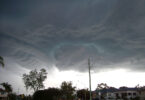As the humanitarian crisis deepens in Afghanistan following the US withdrawal of troops and Taliban takeover, advocacy groups are urging the Australian government to do more to help Afghans.
A petition by the Afghan Australian Advocacy Network signed by over 145,000 people puts several requests to the government including to increase its humanitarian intake of Afghans to at least 20,000.
The Government has so far allocated 3,000 humanitarian places out of its current program of 13,750 places to Afghans, indicating that this number is likely to increase.
Prime Minister Scott Morrison has however shut down the idea of Australia matching the efforts of the United Kingdom and Canada, who have both committed to resettling 20,000 Afghan refugees.
“I note that some are talking about figures of 20,000,” the Prime Minister told reporters in Canberra on August 18. “But can I tell you, there are no clear plans about that. Australia is not going into that territory.”
Australia’s Humanitarian Intake since WW2
Beautiful, easy data visualization and storytelling
In the past Australia has set up dedicated refugee programs and increased its humanitarian intake to accommodate refugees in times of global turmoil.
Most recently in 2015 the Abbot government added an additional 12,000 humanitarian places to the usual humanitarian intake for Syrian refugees in response to the growing Syrian refugee crisis.
Advocacy groups have also asked the government to prioritise Afghan family reunification visas.
Australia’s family migration program, which played a significant role alongside the humanitarian program in resettling Vietnamese asylum seekers after the Vietnam War, has steadily got smaller relative to skills stream visas over the last three decades.
Australian Migration by Visa Type
Beautiful, easy data visualization and storytelling
In the 1984-85 financial year family stream visas made up 64 per cent of Australia’s total migration program including humanitarian visas, compared to the skills stream comprising 15 per cent and humanitarian visas 21 per cent.
Most recent data from the 2019-20 financial year shows that family stream visas make up 29 per cent of the total plan, with the skills stream comprising 62 per cent and Humanitarian visas less than 1 per cent.
Refugee Historian Rachel Stevens said in the Conversation on August 23 that this change in the makeup of Australia’s migration program could make it more difficult for Afghans to get visas through this stream compared to asylum seekers in the years following the Vietnam War.
“Without a sizeable family migration program, one wonders what will happen to Afghan asylum seekers who don’t meet the strict eligibility for refugee status,” said Ms Stevens
The initial allocation of 3,000 humanitarian visas to Afghans over the next year is a big increase on previous years, with just over 6,500 offshore humanitarian visas granted to Afghans in total since the 2015-2016 financial year.
Top 5 Countries of Birth for Humanitarian Visas Granted
Beautiful, easy data visualization and storytelling
(Featured Image: “An overall view of a refugee camp in Kabul” by NATO Training Mission-Afghanistan is licensed by CC BY-SA 2.0)






